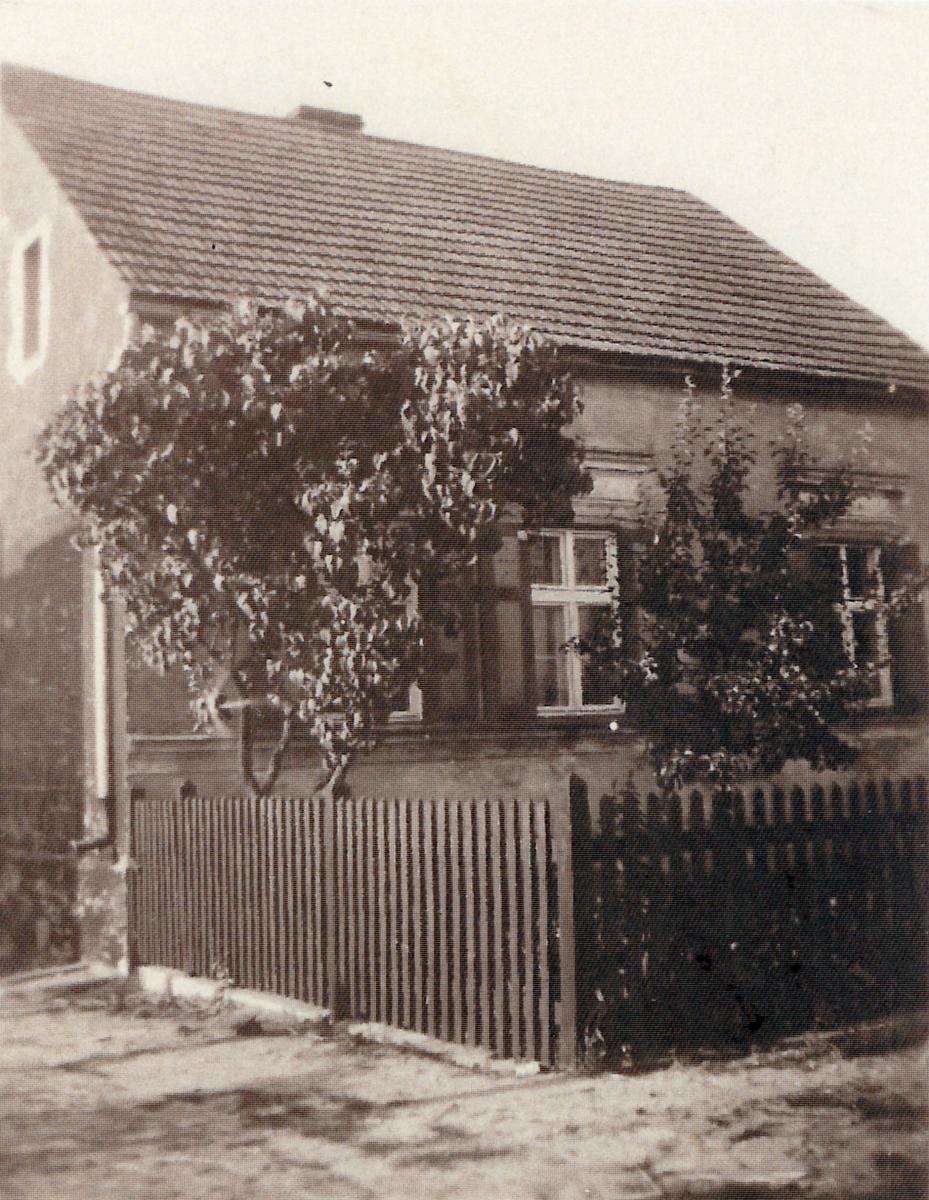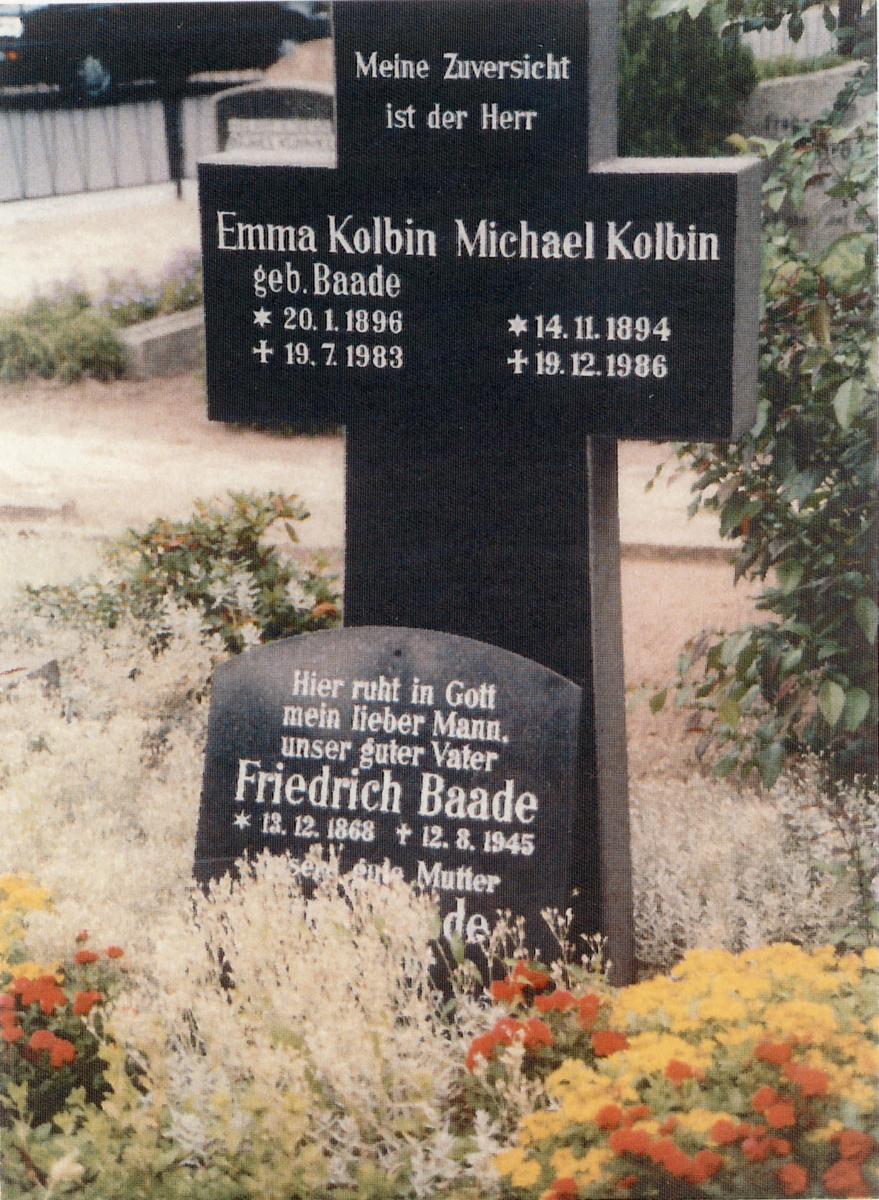Leest Group, Berlin District
Roger P. Minert, In Harm’s Way: East German Latter-day Saints in World War II (Provo, UT: Religious Studies Center, Brigham Young University, 2009), 98-100.
There were two dozen organized small groups of Church members in the East German Mission in 1939. These groups were scattered all over the mission territory and generally consisted of one family each, with a few of their neighbors and friends. One such group was organized in Leest, twenty-two miles southwest of Berlin. The closest official branch was in Potsdam, six miles away. The story of the Leest group during World War II is both heroic and tragic.
The core of the Leest group was the Baade family. Friedrich (“Grandpa”) Baade had joined the Church in the 1920s and had taught his children the gospel. The only other priesthood holder in the group was Michael Kolbin, the husband of Friedrich’s daughter, Emma. He was born in Russia, but after being captured during the First World War had chosen to stay in Germany. The Kolbin family lived on the main floor of the Baade home, while the Baades lived upstairs.
 The Baade home in Leest as it appeared during World War II. (H. Fischer)
The Baade home in Leest as it appeared during World War II. (H. Fischer)
The religious life of the Saints in Leest centered on the Baade home. Anna Frieda Martha Wolf, the only survivor of the group as of this writing, later recalled the setting:
We held our meetings in the Baade home with perhaps a dozen persons. We used the largest room; it was about 20 by 25 feet in size. . . . We started at about 9 a.m. with sacrament meeting for one hour, then Sunday School. We little kids went into the kitchen for our class, and the older members stayed in the living room.[1]
The Autobahn [national highway] ring around metropolitan Berlin passed very close to Leest, and an eminent domain ruling cost the Baade family some of their land. According to Anna Wolf, Grandpa Baade “really suffered” from this development and was not a supporter of Hitler or the Nazi Party. His attitude may have attracted negative attention to the tiny group. Anna recalled the following:
Sometimes we had visitors [government officials] in our meetings. [They] came to the house, greeted with “Heil Hitler” said that they were there to investigate the activities, then just listened and left—no disturbance, no interruption. They behaved very correctly.
As the war drew to a close, another of Friedrich Baade’s daughters, Charlotte Fischer, brought her children from eastern Berlin to live in the Baade family home in Leest. With gasoline being close to impossible to find, she took a horse-drawn wagon belonging to her husband’s business and traversed the twenty-five miles to Leest despite dynamited bridges and the confusion of a Berlin that would soon be conquered by the Red Army. Shortly after they arrived in Leest, Charlotte Fischer’s sons saw enemy soldiers for the first time.[2]
One night, Hans Fischer (a Baade grandson born in Berlin in 1931) heard somebody pounding on the door of the Baade home. A Russian man who was working for the Fischer business in eastern Berlin answered the door and was confronted by Russian soldiers. He apparently told his countrymen that there were no German soldiers on the property. Satisfied, the soldiers left the home in peace—for the time being.
“The war had been hard on us, but we had been protected,” recalled Anna Wolf. But the following weeks were a time of terror for her. She had married just weeks before the war began, but her husband (not a member of the Church) had been in the German army for years and when the war ended in May 1945, his whereabouts were not known. The residents of Leest may have believed that when the fighting ceased, life would be easier for them. However, conditions under military occupation were worse than before. Anna Wolf gave this account of happenings in that little town:
You can hardly believe what they did. Night after night, the Russians stole our stuff, killed people, and attacked women. I was still rather young in those days.[3] One of the sisters in the branch (her husband was related to Grandpa Baade) was raped so many times (she was the only one), and we just could not help her.[4] We kept one window open all the time to listen for the Russians coming. We all got together in the village and talked about how we would defend ourselves against the Russians. . . . Well, I sat up by the window watching for them to come. I gave the signal with my whistle then everybody hid. Then the Russians stormed into our house, broke all of our windows, and looked for women to rape.
On one occasion, Anna was chased by enemy soldiers. She escaped them in her home and ran down Leest’s only street, screaming at the top of her lungs. “Where did I run to? Grandpa Baade!” Friedrich Baade and his son-in-law blocked the entry of the home to prevent the soldiers from pursuing young Anna.
This may not have been the only time when Grandpa Baade made himself unpopular with the Soviet occupation troops. As soldiers ransacked homes in Leest and terrorized the populace, he did what he could to protect his home, family, and friends.
Anna believed that the soldiers’ anger toward Grandpa Baade and other residents incited a terrible act of revenge, recounted by Hans Fischer:
The war had been over for two or three months [by August 12]. Three Russian soldiers pulled up to the house in a jeep. One stayed in the jeep, and the other two came into the house and started taking clothing, watches, and anything else that they wanted. My grandpa had built that house himself; he finished it in 1900. He was so upset with these soldiers that he walked out to the jeep with a pencil and a piece of paper and wrote down the license plate number. He wanted to report them, because the Russian soldiers could get in trouble for doing that. When the Russian in the jeep saw what my grandfather was doing, he took out his pistol and shot my grandfather.
Grandpa Baade was carried into his home mortally wounded and died a few minutes later. But the tragedy that befell the founder and leader of the Latter-day Saint group in the small rural community of Leest did not herald the end of the Church there. The surviving Baades and their friends continued to hold Church meetings and remained loyal to their Heavenly Father.[5]
 Friedrich Baade was laid to rest in the church cemetery in nearby Töplitz. (H. Fischer)
Friedrich Baade was laid to rest in the church cemetery in nearby Töplitz. (H. Fischer)
In Memoriam
Only one member of the Leest Group did not survive World War II:
Karl Friedrich August Baade b. Neu Töplitz, Brandenburg, Preussen 13 Dec 1867; son of Carl Ludwig Baade and Christiane Wilhelmine Wittenbecher; bp. 27 Aug 1927; m. Alt Töplitz, Brandenburg, Preussen 22 Oct 1893, Anna Elisabeth Ruhr; 6 children; shot by Soviet soldier, Leest, Brandenburg, Preussen 20 Aug 1945. (H. Fischer; IGI)
Notes
[1] Anna Frieda Martha Wolf Touchard, interviewed by the author in German, Potsdam, Germany, August 21, 2006. German summarized in English by the author.
[2] Hans Fischer, interviewed by the author, Midway, UT, March 26, 2006.
[3] Anna Wolf was twenty-six years old at the time.
[4] Her name was Anna Ruhr Meyer, according to Anna Wolf.
[5] Just a few yards from the Baade home, a tiny but beautiful LDS meetinghouse now stands as a quasimemorial to the faithful Saints of Leest.
